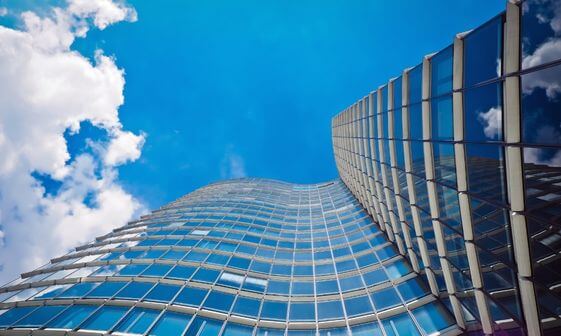When you think of Singapore, a skyline filled with modern skyscrapers and lush green pockets likely comes to mind. With the ambitious Singapore Green Plan 2030, this balance of urban sophistication and ecological responsibility is poised to elevate to unprecedented heights. In this blog, we'll delve into what this plan entails, its overarching purpose, and its implications for the commercial real estate sector.
Jump Too:
What is the Singapore green plan 2030?
What is the purpose of the Singapore green plan?
What are the key targets of the Singapore green plan?
The importance of commercial real estate in creating a sustainable future
Singapore green building master plan
The role of building analytics in aiding Singapores sustainability efforts
What is the Singapore Green Plan 2030?
The Singapore Green Plan 2030 is a multi-faceted, government-led initiative aimed at steering the nation towards a more sustainable future. It's a roadmap that outlines the country's strategies and commitments to drive sustainable development over the next decade, ensuring that Singapore remains both a global economic hub and a leader in environmental stewardship. The plan outlines the country’s ambitious goals and concrete targets across five key pillars: City in Nature, Sustainable Living, Energy Reset, Green Economy and Resilient Future.
What is the purpose of the Singapore Green Plan?
The primary objective of the Singapore Green Plan 2030 is to achieve Singapore's long-term net zero emissions aspiration by 2050. Beyond this, the plan aims to address the pressing challenges of climate change and ensure a green, liveable and sustainable environment for future generations.
By strengthening Singapore’s commitments under the UN’s 2030 Sustainable Development Agenda and the Paris Agreement, the Green Plan 2030 not only sets ambitious targets for Singapore as a country, but also contributes to global sustainability efforts.
What are the key targets of the Singapore Green Plan?
Here's an overview of the Singapore Green Plan 2030 across its five key pillars:
- Increase urban greenery, plant more trees, and develop more nature parks
- Ensure every household will be within a 10 minute walk from a park
- Reduce waste to landfill and household water consumption
- Promote public transport usage and increase the share of electric buses in fleets
- Expand cycling path networks
- Reduce carbon emissions from the schools sector
- Expand the use of solar energy and energy storage systems to support clean energy transitions
- Reduce the energy consumption of Singapore’s commercial buildings
- Reduce the energy consumption in HDB towns
- Encourage the transition to EVs across Singapore
- Support industries that provide sustainable solutions and create green job opportunities
- Promote Singapore as a leading centre for green finance and services
- Invest in research and technologies that drive sustainability
- Develop infrastructure and strategies to protect against rising sea levels
- Increase local food production to meet a significant portion of the nation's nutritional needs.
For more information on the specific quantitative targets outlined in the Green Plan 2030, visit the Singapore government website.

The importance of commercial real estate in creating a sustainable future
As part of the broader 'Energy Reset' and 'Green Economy' pillars, the commercial real estate sector is experiencing significant emphasis in the Singapore Green Plan 2030. The Singapore government is championing the cause of green buildings, nudging developers and building owners to adopt sustainable construction practices, retrofit older structures, and incorporate energy-saving technologies.
As buildings account for over 20% of Singapore's emissions, the way commercial properties are designed, constructed, and managed can have a profound impact on the country's environmental footprint. Here's how the commercial real estate sector can play a pivotal role in sustainability:
1. Green Building Design and Construction:
- Adopting green standards: By adhering to Singapore's Green Mark scheme or other international green building standards, developers can ensure that commercial properties are designed and constructed with sustainability in mind.
- Utilising sustainable materials: The use of eco-friendly building materials can reduce the environmental impact of construction.
2. Energy Efficiency and Management:
- Implementing energy-saving technologies: The integration of energy-efficient lighting, HVAC systems, and other technologies can significantly reduce energy consumption.
- Utilising building analytics software: Platforms like CIM's PEAK Platform can provide insights into energy usage patterns, allowing for optimization and reduction in emissions.
3. Green Leasing and Tenant Engagement:
- Green leasing agreements: Including sustainability clauses in leasing agreements can encourage tenants to adhere to green practices.
- Educating tenants: Providing information and incentives to tenants can foster a culture of sustainability within commercial spaces.
4. Collaboration with the Singapore Green Building Masterplan:
- Aligning with national goals: By actively participating in initiatives under the Singapore Green Building Masterplan, such as the Green Buildings Innovation Cluster (GBIC) programme, the Green Mark Scheme and the Super Low Energy programme, commercial real estate stakeholders can contribute to national sustainability targets.
For more information on the Green Mark Scheme in Singapore, check out our blog: “The Green Mark Certification Scheme Explained.”
Singapore Green Building Master Plan
This masterplan is a strategic initiative by the Building and Construction Authority (BCA) to promote environmental sustainability in the built environment. Launched as part of the Green Plan 2030, the Masterplan has seen several iterations since its inception, each focusing on progressively ambitious targets and strategies to ensure that green building practices become the norm rather than the exception.
It emphasises the importance of green buildings, both new and existing, in reducing the nation's carbon footprint. By setting energy efficiency standards, promoting best practices, and encouraging the adoption of green technologies, the masterplan aims to make Singapore's buildings more sustainable.
The current SGBMP aims to deliver three key targets of “80-80-80 in 2030”, which are outlined below:
- Green 80% of Singapore’s buildings by 2030
- 80% of new buildings (by gross floor area) are to be Super Low Energy buildings from 2030
- Best-in-class green buildings are to see an 80% improvement in energy efficiency (over 2005 levels) by 2030
.webp)
The role of building analytics in aiding Singapore’s sustainability efforts
To achieve the ambitious goals outlined in the Green Plan 2030 and the Green Building Masterplan, building managers need sophisticated tools. Here’s where platforms like CIM's PEAK step in. PEAK, a cutting-edge building analytics software platform, helps buildings transition into Super Low Energy (SLE) buildings through:
- Equipment performance monitoring: PEAK integrates with building management systems and energy meters to monitor the performance of equipment and systems. It enables property owners to identify underperforming equipment, detect anomalies, and optimise energy usage. By analysing real-time data and comparing it against baseline or benchmark data, property owners can pinpoint areas for improvement and implement energy-saving measures.
- Automated fault detection and diagnostics: PEAK automatically detects equipment faults, abnormal energy consumption, or system inefficiencies. By alerting property owners to these issues in real-time, they can quickly address them, improving the overall energy performance of the building.
- Optimisation of building systems: The platform analyses energy data to identify opportunities for optimising building systems, such as HVAC, lighting, or occupancy scheduling. By analysing energy consumption patterns, occupancy levels, and environmental conditions, property owners can implement energy-saving strategies like adjusting setpoints, optimising schedules, or upgrading equipment. This optimisation leads to significant energy and emissions reductions.
By providing actionable insights, predictive analytics, and seamless integration with building systems, platforms like PEAK empower building managers to make informed decisions that reduce energy emissions. As Singapore continues to strive towards a sustainable future, tools like these will be instrumental in transforming the commercial real estate landscape, making buildings not only functional and profitable but also environmentally responsible.
.webp)

.jpeg)
.jpeg)




